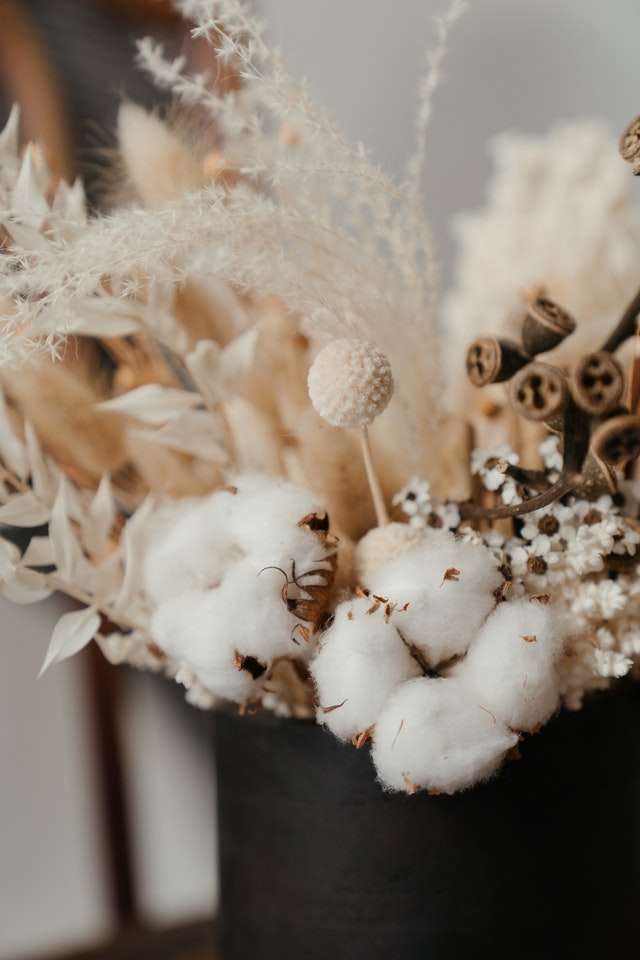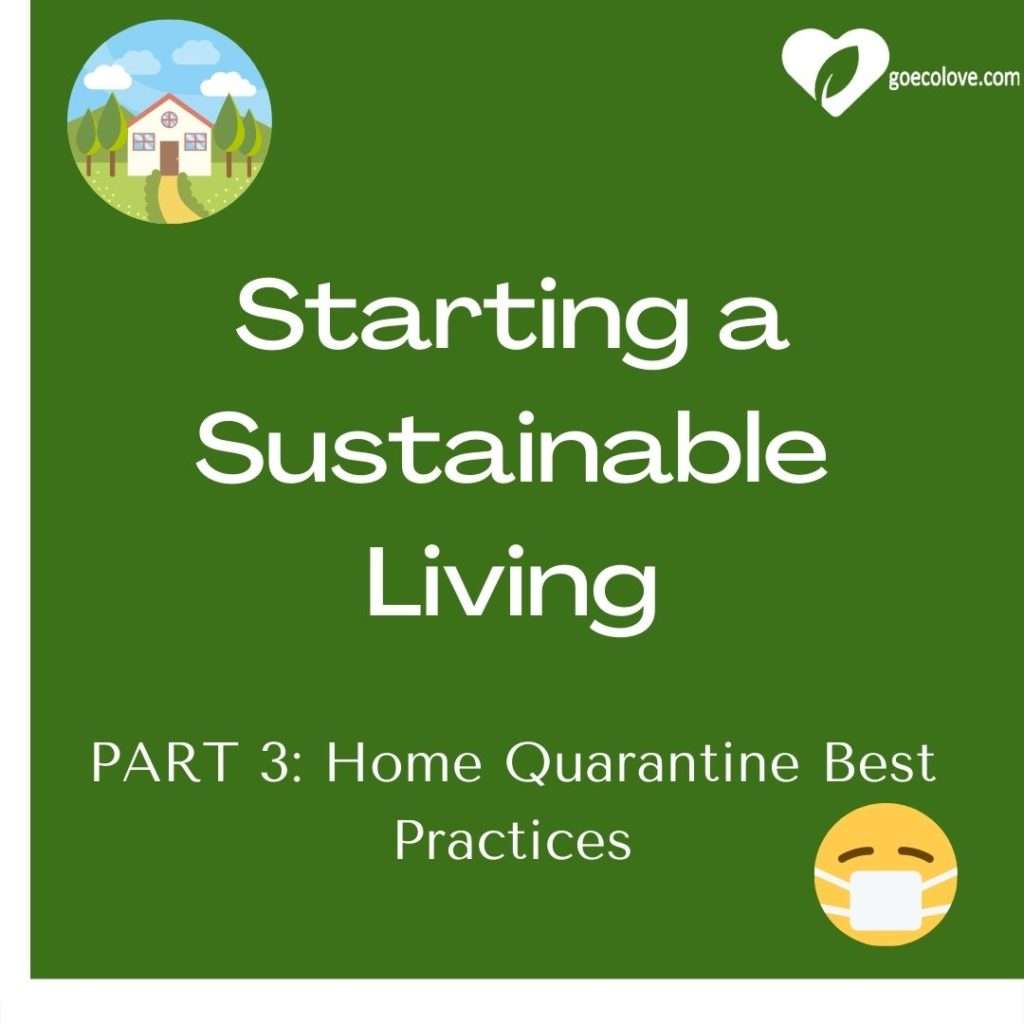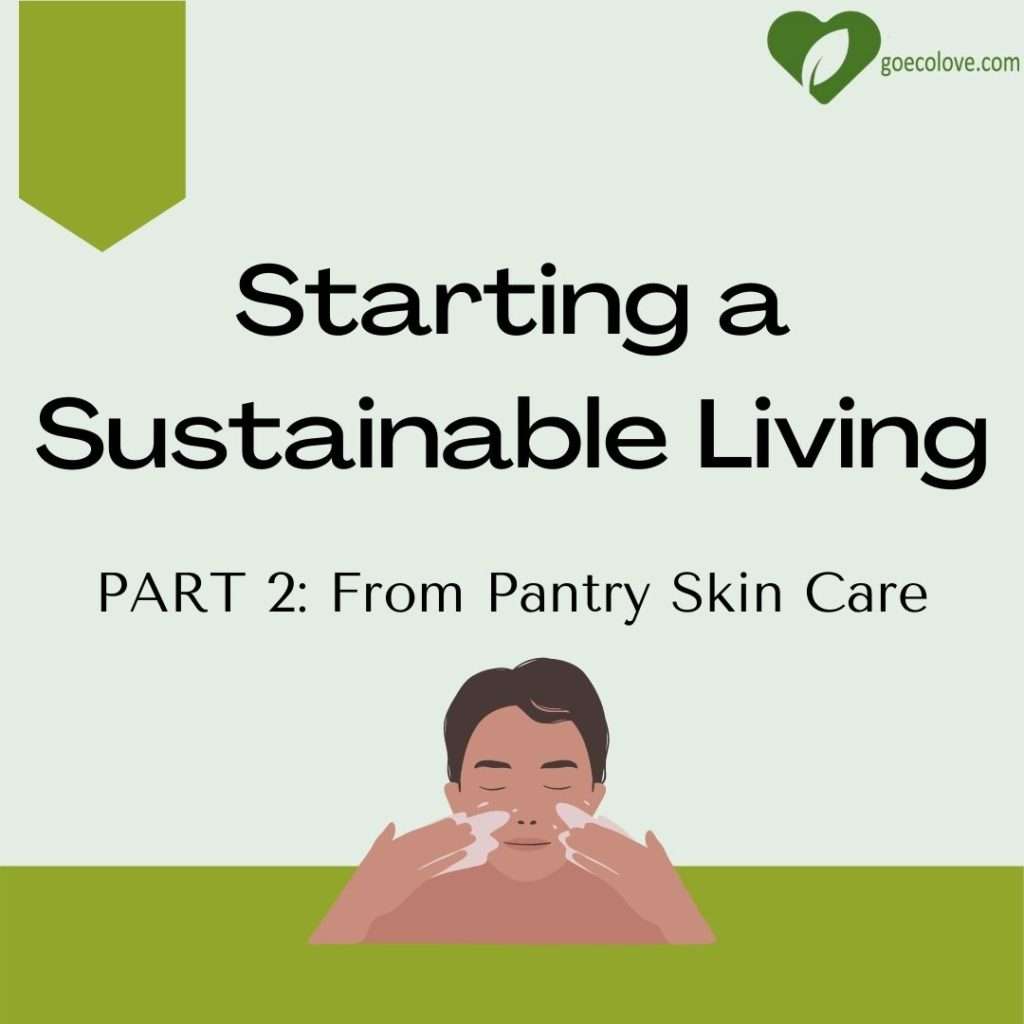PART 3: Home Quarantine Best Practices
By : Kim Ceniza (theashletters.com)
Being on quarantine may have its ups and downs. Enjoying the great outdoors and being in the company of good people seemed to have restrictions due to the pandemic.
Nevertheless, the somewhat “time freedom” we got gets our creative juices working while being safe at home.
Staying at the comfort of our abode does not always mean “less work” (especially for moms). But having “more to do” may also mean you are getting busy at something you may have been wanting to do all along! And that is great! So, why not put a bit of a challenge for it?…
By making our stay-at-home be a sustainable living!
First thing, there is no need to turn your house upside-down and inside-out for you to start this!
With three simple to-dos’, you may start your home living sustainably!
Unleash Your Inner Master Chef
Ordering a to-go meal is very convenient…
Click – Pay – Wait.
Then you get your food on your doorsteps. No more dishes to do after! Just serve the food, dig and stuff, and just throw containers out. Sometimes, we tend to keep those reusable plastic containers. Such convenience, it is!
This will be very helpful for very busy days or for those times that you need some sanity check. But ordering at most times will not be sustainable. It will be expensive in the long run and you will be piling up wastes (worse, plastic wastes) exponentially. Oh no!
Remember those microwavable plastics you got from all your food deliveries? Where are they now? Maybe being piled up in your kitchen counter corner? Or hidden in a special place in the cupboard? Ain’t it? That is lesser evil than just throwing them, right? BUT, how are you to deal with them afterwards?
Cooking meals at home is not only sustainable, but it is also way cheaper. It also enhances your skills and creativity in the kitchen, and brings family better together. Nothing beats a freshly cooked meal out from the stove or oven and the smell covers your home. Ugh, heartwarming! It is like a blanket during a cold weather or like the best medicine during your down days.
So how does home cooking become sustainable?
It starts with PLANNING.
Planning on what to cook will help you break down the things that you need to buy and with it, you can also prepare the things you need before going shopping, like, bags and containers you can bring to avoid asking for plastic wraps or bags. Planning is also best when you are on a budget. Another added advantage is you can monitor the food that you intake. Incorporating whole foods in season should always be the top priority in shopping.
In cooking meals, you can opt to cook in big batches and just store them in the fridge or prepare all what is needed, like marinations, cleaning the meats and vegetables, and sorting them out. Planning and preparing ahead would definitely give you more time off. The best thing, you can include your family in doing all these! More hands, less time to finish!
There are a lot of recipes and videos we can search out now that are easy and quick to cook and there are also those that are specified in which type of diet you are in, like keto, vegan, low-carb, or just all out deliciousness! There are also cooking videos that challenge you to prepare 10 meals under a $25 budget. The options and ways are limitless when it comes to cooking!
Less wastes, more home-cooked meals, healthier, and sustainable! Yes to this!
Build Your Urban Garden
Planting and/or collecting plants has been one of the 2020 trends that kept most of us sane. The inability for most to go outside and enjoy the green scenery led us to build our own home garden. For most who are living in the city and those who are confined to small spaces, bringing in nature within the corners of our home has somehow brought life into the concrete walls.
There are a lot of plants that can be kept inside our house with minimal attention. Some examples of these plants are: aloe vera, pothos, snake plant, spider plant, succulents, monstera, philodendron, and many more.
For those who are more into the practical side of things, planting vegetables, herbs, and fruits is the way to go. For small spaces, there are a lot of these plants that can be grown in small pots or containers and can be placed in specific areas in the house depending on their needs like sunlight, darkness, and humid atmosphere. For these cases, special attention should be given for different plants that may need different care.
Planting and taking care of plants is a good jumpstart in sustainable living. Getting hooked and the grip of it would lead one to understand and study more about them and how important plants are in a cleaner life. Growing your own plants for food is also a good example of sustainability and would greatly help one in saving money and little by little helping in the unethical ways of big productions.
Reusing + DIY
Sometimes, boredom attracts spending. Oops, guilty here!
Stuck at home and being bored staring at every corner and thinking of ways to spend hours rather than washing dishes or doing laundry could increase our screen time. This includes online shopping. Ouch!
New gadget …. Add to cart!
New kitchen stuff… Add to cart!
New pantry finds… Add to cart!
Anything that we think we might need or don’t have doesn’t have to be ordered or bought. Some or many of them can be made through recycling and some creativity!
Here are some good ideas using common or usual waste we gather:
Cans
Cans can be reused as planters. You can turn them into hanging ones with wires and hooks and place them in balconies.
So instead of buying pots or new planters, you can use those clean tins/cans.
Aside as planters, these can also be painted over to avoid rusting early. You can paint and decorate them however you want and these can be used as organizers.
Glass Containers / Glass Bottles
Bottles can surely be used longer and easier to clean than tins. And the ways on how to reuse and recycle them are endless.
They can also be used as organizers. But apart from that, similar shaped and sized bottles can be used as spices containers.
Glass containers, in general, can be reused as containers for food, sauces, any liquid, or even leftovers.
Plastics
Plastic bags, plastic containers, plastic utensils, plastic bottles, plastic what not?
Reducing plastic waste is but a challenge. Most of the items we buy are contained in plastics or covered with plastic. Plastic is convenient and cheap but is not really environmentally friendly. The best way that we can do for now is reuse them until they wear off.
There are many ways on how we can reuse them aside from their original use.
From being planters, to organizers, to room decorations. Just use some basic tools and materials to create something out of them!
4. Old Clothes
Due to fast fashion and changing trends, clothes seemed to be disposable. The clothing industry is not exempted in the environmental and ethical issues. Supporting slow fashion, using second hand clothes, and repurposing old clothes are some of the movements and practices that are followed to go against fast fashion.
Through the help of some internet finds and creativity, there are tons and tons of ways on how we can repurpose old clothes or even upcycle them. Some examples are: turning old socks to dolls or coffee glasses cozies; turn outdated denims to napkins or organizer buckets; transform your old sweaters into beautiful winter socks, hand warmers, or beanies; sew old flannel shirts into scarves, patchwork runner, or as a tote bag; make colorful rugs from your overworn tees or even crochet coasters or baskets from strips those tees; and a lot more to think of!
5. Food wastes and some paper
Staying at home more means loads of compostable wastes: food leftover, fruit and vegetable peels, some kind of paper/cardboard/boxes, dried leaves, and a lot more. Instead of throwing them into the trash that would lead to greater dumps that would emit ginormous crap of greenhouse gases, why not compost them into grounds that can be mixed in soil to make your plants happier?
United States Environmental Protection Agency (EPA) provided very good information about composting at home. They gave a breakdown of compost basic ingredients:
BROWN – dead leaves, branches, paper, and twigs; these are the carbon contributor into the mix.
GREENS – grass clippings, vegetable waste, fruit scraps, and coffee grounds; these materials provide nitrogen.
WATER – proper moisture/humidity is also important in breaking down the materials into compost.
The following are the common materials that you can include in your compost:
Fruits and vegetables Eggshells Coffee grounds and filters Tea bags
Nut shells Shredded newspaper Cardboard Paper Yard trimmings
Grass clippings Houseplants Hay and straw Leaves Sawdust
Wood chips Cotton and Wool Rags Hair and fur Fireplace ashes
In terms of paper, not all kinds of it are allowed. Some papers that are glossy and colored may be highly processed papers that may contain heavy metals and poisonous inks, waxes, and clays. So you may want to avoid them.
Here are a list of compost safe papers varieties:
Bills Credit card statements Non-glossy junk mail Envelopes
Office paper (plain or printed on) Receipts Newsprint Notebook paper
Used school/work papers Scrap paper
Of course there are a lot of ways on how we can make our safe-from-home living be sustainable. The above suggestions are good practices while we spend most of our time now indoors. If we try to practice them little by little until we get used to it, the better for our environment and for us.
Extras sustainable tips!
Since we love to send out our love to the world and to you, here are extra tips we can share to add up to good habits:
1. Go paperless!
Bills, statements, and more bills and statements… if there is an option for you to go paperless with these companies, go ahead and choose paperless receipts and billing! This would reduce paper usage and carbon footprint from paper, printing, delivery, and energy used in the process.
Lectures, books, manuals, and the like?
If you are one of those who can read and study using your laptop or cellular phone or tablet, better choose downloading or purchasing ebooks or electronic copies of what you need instead of purchasing the hard copy or printing them.
2. Recycling centers
If the above tips exhaust you or if you are just too busy to get your hands do the cooking, planting, ang DIY-ing, maybe you can search out local recycling centers near you! There are a lot of recycling centers nowadays that collect different kinds of materials and transform them into new products.
Search these centers out now then collect small batches of whatever you may want to recycle and send them out.









